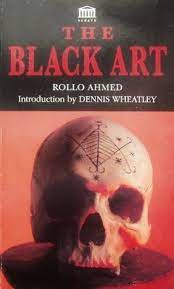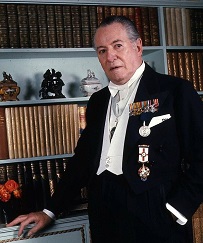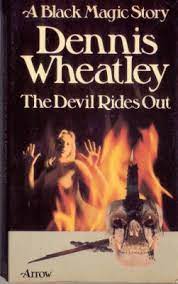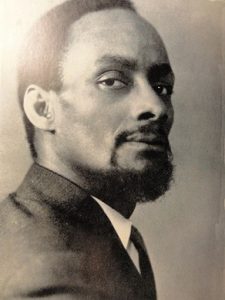
© Senate Books
With Halloween just three days away, here’s a timely book review.
When I was 12 or 13 years old, you couldn’t keep me away from the novels of Dennis Wheatley. More precisely, you couldn’t keep me away from Wheatley’s occult novels, such as The Devil Rides Out (1934), To the Devil a Daughter (1953), They Used Dark Forces (1964) and Gateway to Hell (1970). They were crammed with things that at the time seemed utterly cool to me, things such as astral projection, demonic possession, revived corpses, evil slug-like elemental beings from other planes of existence, diabolic homunculi needing virginal blood to be brought to life, chalk pentacles offering shelter from assaults by the powers of darkness, unholy talismans with the potential to unleash the Four Horsemen of the Apocalypse, and devil-worshipping Sabbats climaxing in the summoning of the Goat of Mendes.
Incidentally, among Wheatley’s huge catalogue, which included war, espionage and historical-adventure stories, these are the only books of his that anyone remembers today.
There was a problem with getting hold of Wheatley’s fiction, however. In the 1970s, his occult thrillers were published by Arrow Books in a variety of saucy covers. Each book was adorned with a picture of a naked, big-breasted lady dancing about a flame while some Satanic-looking artefact – a skull, a ghost’s head, a broken cross, a pagan devil-mask – hovered in the foreground. With so much naked female flesh displayed, I felt extremely awkward as a 12 or 13-year-old boy buying those novels in Whitie’s, which at the time was the main bookshop on Peebles High Street, near where I lived in Scotland. In fact, when I bought my first Wheatley novel, The Devil Rides Out, I remember Mrs Whitie, a formidable old lady who could probably have taken on a coven of Wheatley’s devil worshippers and beaten them up, staring over the counter at me with a withering mixture of pity and contempt. Then she sighed and said, “I suppose we’d better stick this in a brown paper bag for you.”

From wikipedia.org / © Allan Warren
Dated and corny though they seem today, Wheatley’s Satanic potboilers surely unsettled many genteel readers in 1930s, 40s and 50s Britain with their premise that in mansion houses and estate grounds across the land, beastly, posh devil-worshippers were getting up to hijinks during unspeakable black-magic rituals. Ever the showman, Wheatley made his subject matter seem that little bit more threatening by prefacing his novels with a solemn warning: “All of the characters and the situations in this book are entirely imaginary, but, in the inquiry necessary to writing of it, I found ample evidence that Black Magic is still practised in London, and other cities, at the present day… Should any of my readers incline to a serious study of the subject, and thus come into contact with a man or woman of Power, I feel it is only right to urge them, most strongly, to refrain from being drawn into the practice of the Secret Art in any way. My own observations have led me to an absolute conviction that to do so would bring them into dangers of a very real and concrete nature.”
“The inquiry necessary to the writing of it”, i.e., the research Wheatley conducted prior to The Devil Rides Out, brought him into contact with author and clergyman Montague Summers, who’d written a History of Witchcraft and Demonology in 1926 and translated the notorious witch-hunters’ manual Malleus Maleficarum (1486) into English in 1929; with the occultist Aleister Crowley, the notorious self-styled ‘Great Beast’ and ‘Wickedest Man in the World’ whose antics in the early 20th century had terrified God-fearing folk who believed everything they read in Britain’s popular press; and with one Rollo Ahmed, whom Wheatley would later describe as “a man of profound knowledge and one whose very presence radiates power” and “a Master, who had devoted a lifetime to acquiring a first-hand knowledge of that grim ‘other world’ which lies so far from ordinary experience, and yet is so very near for those who have the power to pierce the veil.”
Ahmed claimed to have been born in Egypt and was of Egyptian and Guyanese parentage. Before his arrival in Britain, he’d knocked around South America and the Caribbean, where he’d supposedly gained knowledge of everything from lycanthropy to Voodoo and Obeah. With his opportunities to earn proper money in a proper job in Britain stymied by the era’s widespread racism, he had to play up his dark-skinned exoticness to survive – which meant selling himself as a yoga teacher, herbalist and general authority on the occult. Despite his own racist attitudes, which sometimes bubbled up in his novels, Wheatley took a shine to Ahmed, started learning Raja Yoga from him, and happily embroidered his memories of the man with little details that suggested, yes, there was something other-worldly about him.
For example, Wheatley alleged that one night Ahmed accepted an invitation to dine with him and walked a long way across London to his house. The evening was freezing, yet Ahmed arrived without an overcoat or gloves, completely unaffected by the cold and with hands that were ‘as warm as toast’. A more alarming claim by Wheatley was that, after introducing Ahmed to an acquaintance in the Society for Psychical Research, the acquaintance worriedly asked Wheatley if he too had seen the ‘little black imp’ that he’d seen standing next to Ahmed.
Wheatley did Ahmed a favour when, after the success of The Devil Rides Out, he was approached by Hutchinson, the publisher, and asked if he would like to write a non-fiction book about the occult. Wheatley declined, feeling he wasn’t knowledgeable enough. (Three-and-a-half decades later, he obviously did feel he had the knowledge, for in 1971 he published a book on the subject entitled The Devil and All His Works.) Instead, he advised Hutchinson to hire Ahmed for the job. They did, and the result was The Black Art, originally published in 1936, with an enthusiastic introduction by Wheatley.
I recently read a 1994 reprint of Ahmed’s The Black Art, mainly because of my interest in Wheatley. It’s an exhaustive and, dare I say it, exhausting book. Its 22 chapters explore every historical period from ‘antediluvian times’ to the modern day, with plenty of detail in between about the ancient Egyptians and Jews, the Greeks and Romans, and the practitioners of the Middle Ages. Geographically, they cover North and South America, India, ‘the East’ and the British Isles. And they examine the associated phenomena of ‘vampirism and werewolves’, ‘symbols and accessories of magic’, ‘sex-rites’, ‘necromancy and spiritualism’ and ‘the Black Mass’, as well as the church’s reactions to these shenanigans.
Ahmed’s technique with the book is to throw in everything bar the kitchen sink, so that the reader is bombarded by one anecdote or snippet of information after another, sometimes two or three barely-related items cropping up in the same paragraph. This makes it difficult to process more than a few pages of The Black Art in one sitting. At the same time, no effort is made to attribute sources to all the anecdotes and information – there’s no footnotes or appendix. Indeed, I’ve seen one brutal review online where Ahmed is accused of filling the book with material plagiarised from the works of the afore-mentioned Montague Summers.
Still, if you’ve enjoyed Wheatley’s novels and you make it to near the end of The Black Art, it’s fun in the final chapters to encounter information that Wheatley apparently incorporated into The Devil Rides Out. For example, there are instructions on how to create a ‘protective circle’ in which you can carry out, say, an exorcism ceremony without being attacked by the forces of darkness: “a large, five-pointed star should be drawn with chalk and a circle of double lines drawn around it… The participants should wear garlands of asafoetida and garlic flowers, and where the disturbances are of a material nature they should on no account leave the circle until peace and harmony have been restored.” Perhaps the most famous scene in The Devil Rides Out involves the Duc De Richleau and his followers taking refuge in such a circle, while the villainous Mocata directs his satanic powers against them.

© Arrow Books
There’s also an interesting chapter on elementals, supernatural entities that are created, Ahmed says, by humans’ “unexpressed thoughts… upon the mental plane.” Thus, “evil and destructive thoughts produce ugly and revolting forms as malevolent and harmful as any ‘demon’ could be.” I suspect that’s what inspired the evil, slug-like thing that plops out of nowhere in a scene during Wheatley’s To the Devil a Daughter.
Interestingly, Ahmed doesn’t try to gloss over the multiple failings of famous alchemists and sorcerers of yesteryear. The 18th-century Italian adventurer and magician Count Alessandro di Cagliostro, who “evolved a masonic system of his own which he called ‘Egyptian Freemasonry’” (and whom, incidentally, Aleister Crowley claimed was a previous incarnation of his), gets six pages dedicated to him. During these, Ahmed makes it pretty clear he was a thief, vagabond, womaniser, opportunist, manipulator and all-round fraud. Of Cagliostro’s Egyptian Masonic Lodge, which became quite the thing in Paris for a while, Ahmed notes: “the fair intimates” had “to undergo some very remarkable experiences of an enthralling and slightly ridiculous nature, after having sacrificed large sums of money on the altar to the grand copt.” Meanwhile, he makes a cutting observation about Franz Mesmer, proponent of ‘animal magnetism’, the man who lent his name to the term ‘mesmerism’ and inventor of the supposed healing device the magnetic tub (again, popular in Paris): the tub “was a very profitable craze for its creator”.
Even Dr John Dee, who was genuinely remarkable, gets short shrift from Ahmed, mainly because of his association with the disreputable, alleged scryer Edward Kelley: “In the course of time… he (Dee) became hopelessly credulous, and after he had taken Kelly into partnership he allowed himself to be involved in various nefarious schemes, completely under the domination of the other.” Dee’s achievements as a cartographer, mathematician, antiquarian and political advisor get no mention.
I suspect Ahmed was jaded about his occult predecessors because he knew all too well himself that establishing yourself as a master of the black arts required more than a little self-promotion and grift. No matter how genuinely interested you were in the field, you were aware that, to keep the money rolling in to feed you and your family, and pay the rent, you depended on the interest of other people – and especially the interest of gullible people, who could be easily exploited, manipulated and parted from their cash. And while Ahmed undoubtedly cut a striking figure around bohemian 1930s London, his story had a sordid side too. He was arrested for fraud several times and, later in life, was reduced to posing as a fortune teller and preying on gullible old ladies. Along the way he lost all his teeth, an indignity he put down to a black magic operation going wrong – it’d happened while he’d been trying to trap a demon. Anything to shore up those occult credentials.
The Black Art is a slog, then, and I’d recommend it only to Dennis Wheatley completists. However, Ahmed wrote one other, very different book that I’d like to read sometime. It has a self-explanatory title: I Rise: The Life Story of a Negro (1937). Dedicated to the mighty Paul Robeson, no less, the autobiographical I Rise chronicles the racism that Ahmed and other people of his ethnicity had to endure in 1930s Britain. It’s a reminder that, while he spent much of his time in an exotic, esoteric and largely make-believe world, where he mentored Dennis Wheatley and wrote knowledgeably of protective circles and elementals, he had a depressingly real and hostile world to negotiate too – its attitudes “ugly and revolting… as malevolent and harmful as any ‘demon’ could be.”



